Jie Tian
Chinese-Vicuna: A Chinese Instruction-following Llama-based Model
Apr 17, 2025



Abstract:Chinese-Vicuna is an open-source, resource-efficient language model designed to bridge the gap in Chinese instruction-following capabilities by fine-tuning Meta's LLaMA architecture using Low-Rank Adaptation (LoRA). Targeting low-resource environments, it enables cost-effective deployment on consumer GPUs (e.g., RTX-2080Ti for 7B models) and supports domain-specific adaptation in fields like healthcare and law. By integrating hybrid datasets (BELLE and Guanaco) and 4-bit quantization (QLoRA), the model achieves competitive performance in tasks such as translation, code generation, and domain-specific Q\&A. The project provides a comprehensive toolkit for model conversion, CPU inference, and multi-turn dialogue interfaces, emphasizing accessibility for researchers and developers. Evaluations indicate competitive performance across medical tasks, multi-turn dialogue coherence, and real-time legal updates. Chinese-Vicuna's modular design, open-source ecosystem, and community-driven enhancements position it as a versatile foundation for Chinese LLM applications.
STPNet: Scale-aware Text Prompt Network for Medical Image Segmentation
Apr 02, 2025Abstract:Accurate segmentation of lesions plays a critical role in medical image analysis and diagnosis. Traditional segmentation approaches that rely solely on visual features often struggle with the inherent uncertainty in lesion distribution and size. To address these issues, we propose STPNet, a Scale-aware Text Prompt Network that leverages vision-language modeling to enhance medical image segmentation. Our approach utilizes multi-scale textual descriptions to guide lesion localization and employs retrieval-segmentation joint learning to bridge the semantic gap between visual and linguistic modalities. Crucially, STPNet retrieves relevant textual information from a specialized medical text repository during training, eliminating the need for text input during inference while retaining the benefits of cross-modal learning. We evaluate STPNet on three datasets: COVID-Xray, COVID-CT, and Kvasir-SEG. Experimental results show that our vision-language approach outperforms state-of-the-art segmentation methods, demonstrating the effectiveness of incorporating textual semantic knowledge into medical image analysis. The code has been made publicly on https://github.com/HUANGLIZI/STPNet.
A Multi-Agent Framework Integrating Large Language Models and Generative AI for Accelerated Metamaterial Design
Mar 25, 2025



Abstract:Metamaterials, renowned for their exceptional mechanical, electromagnetic, and thermal properties, hold transformative potential across diverse applications, yet their design remains constrained by labor-intensive trial-and-error methods and limited data interoperability. Here, we introduce CrossMatAgent--a novel multi-agent framework that synergistically integrates large language models with state-of-the-art generative AI to revolutionize metamaterial design. By orchestrating a hierarchical team of agents--each specializing in tasks such as pattern analysis, architectural synthesis, prompt engineering, and supervisory feedback--our system leverages the multimodal reasoning of GPT-4o alongside the generative precision of DALL-E 3 and a fine-tuned Stable Diffusion XL model. This integrated approach automates data augmentation, enhances design fidelity, and produces simulation- and 3D printing-ready metamaterial patterns. Comprehensive evaluations, including CLIP-based alignment, SHAP interpretability analyses, and mechanical simulations under varied load conditions, demonstrate the framework's ability to generate diverse, reproducible, and application-ready designs. CrossMatAgent thus establishes a scalable, AI-driven paradigm that bridges the gap between conceptual innovation and practical realization, paving the way for accelerated metamaterial development.
COMMA: Coordinate-aware Modulated Mamba Network for 3D Dispersed Vessel Segmentation
Mar 04, 2025



Abstract:Accurate segmentation of 3D vascular structures is essential for various medical imaging applications. The dispersed nature of vascular structures leads to inherent spatial uncertainty and necessitates location awareness, yet most current 3D medical segmentation models rely on the patch-wise training strategy that usually loses this spatial context. In this study, we introduce the Coordinate-aware Modulated Mamba Network (COMMA) and contribute a manually labeled dataset of 570 cases, the largest publicly available 3D vessel dataset to date. COMMA leverages both entire and cropped patch data through global and local branches, ensuring robust and efficient spatial location awareness. Specifically, COMMA employs a channel-compressed Mamba (ccMamba) block to encode entire image data, capturing long-range dependencies while optimizing computational costs. Additionally, we propose a coordinate-aware modulated (CaM) block to enhance interactions between the global and local branches, allowing the local branch to better perceive spatial information. We evaluate COMMA on six datasets, covering two imaging modalities and five types of vascular tissues. The results demonstrate COMMA's superior performance compared to state-of-the-art methods with computational efficiency, especially in segmenting small vessels. Ablation studies further highlight the importance of our proposed modules and spatial information. The code and data will be open source at https://github.com/shigen-StoneRoot/COMMA.
Extrapolating and Decoupling Image-to-Video Generation Models: Motion Modeling is Easier Than You Think
Mar 02, 2025Abstract:Image-to-Video (I2V) generation aims to synthesize a video clip according to a given image and condition (e.g., text). The key challenge of this task lies in simultaneously generating natural motions while preserving the original appearance of the images. However, current I2V diffusion models (I2V-DMs) often produce videos with limited motion degrees or exhibit uncontrollable motion that conflicts with the textual condition. To address these limitations, we propose a novel Extrapolating and Decoupling framework, which introduces model merging techniques to the I2V domain for the first time. Specifically, our framework consists of three separate stages: (1) Starting with a base I2V-DM, we explicitly inject the textual condition into the temporal module using a lightweight, learnable adapter and fine-tune the integrated model to improve motion controllability. (2) We introduce a training-free extrapolation strategy to amplify the dynamic range of the motion, effectively reversing the fine-tuning process to enhance the motion degree significantly. (3) With the above two-stage models excelling in motion controllability and degree, we decouple the relevant parameters associated with each type of motion ability and inject them into the base I2V-DM. Since the I2V-DM handles different levels of motion controllability and dynamics at various denoising time steps, we adjust the motion-aware parameters accordingly over time. Extensive qualitative and quantitative experiments have been conducted to demonstrate the superiority of our framework over existing methods.
* Accepted by CVPR2025
FSC-loss: A Frequency-domain Structure Consistency Learning Approach for Signal Data Recovery and Reconstruction
Jan 08, 2025



Abstract:A core challenge for signal data recovery is to model the distribution of signal matrix (SM) data based on measured low-quality data in biomedical engineering of magnetic particle imaging (MPI). For acquiring the high-resolution (high-quality) SM, the number of meticulous measurements at numerous positions in the field-of-view proves time-consuming (measurement of a 37x37x37 SM takes about 32 hours). To improve reconstructed signal quality and shorten SM measurement time, existing methods explore to generating high-resolution SM based on time-saving measured low-resolution SM (a 9x9x9 SM just takes about 0.5 hours). However, previous methods show poor performance for high-frequency signal recovery in SM. To achieve a high-resolution SM recovery and shorten its acquisition time, we propose a frequency-domain structure consistency loss function and data component embedding strategy to model global and local structural information of SM. We adopt a transformer-based network to evaluate this function and the strategy. We evaluate our methods and state-of-the-art (SOTA) methods on the two simulation datasets and four public measured SMs in Open MPI Data. The results show that our method outperforms the SOTA methods in high-frequency structural signal recovery. Additionally, our method can recover a high-resolution SM with clear high-frequency structure based on a down-sampling factor of 16 less than 15 seconds, which accelerates the acquisition time over 60 times faster than the measurement-based HR SM with the minimum error (nRMSE=0.041). Moreover, our method is applied in our three in-house MPI systems, and boost their performance for signal reconstruction.
Large Language Models for Manufacturing
Oct 28, 2024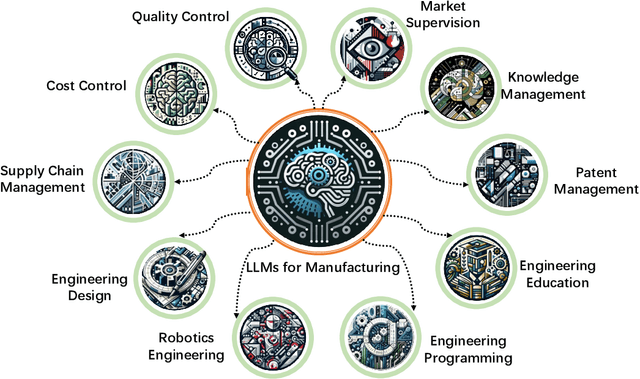

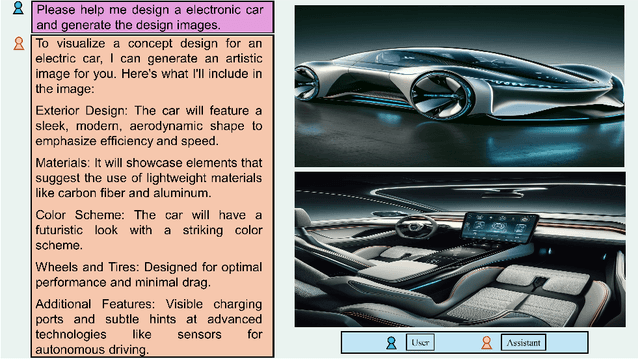
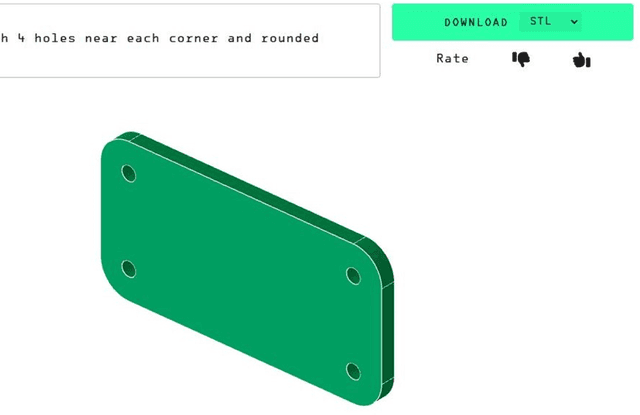
Abstract:The rapid advances in Large Language Models (LLMs) have the potential to transform manufacturing industry, offering new opportunities to optimize processes, improve efficiency, and drive innovation. This paper provides a comprehensive exploration of the integration of LLMs into the manufacturing domain, focusing on their potential to automate and enhance various aspects of manufacturing, from product design and development to quality control, supply chain optimization, and talent management. Through extensive evaluations across multiple manufacturing tasks, we demonstrate the remarkable capabilities of state-of-the-art LLMs, such as GPT-4V, in understanding and executing complex instructions, extracting valuable insights from vast amounts of data, and facilitating knowledge sharing. We also delve into the transformative potential of LLMs in reshaping manufacturing education, automating coding processes, enhancing robot control systems, and enabling the creation of immersive, data-rich virtual environments through the industrial metaverse. By highlighting the practical applications and emerging use cases of LLMs in manufacturing, this paper aims to provide a valuable resource for professionals, researchers, and decision-makers seeking to harness the power of these technologies to address real-world challenges, drive operational excellence, and unlock sustainable growth in an increasingly competitive landscape.
An Analysis for Image-to-Image Translation and Style Transfer
Aug 12, 2024



Abstract:With the development of generative technologies in deep learning, a large number of image-to-image translation and style transfer models have emerged at an explosive rate in recent years. These two technologies have made significant progress and can generate realistic images. However, many communities tend to confuse the two, because both generate the desired image based on the input image and both cover the two definitions of content and style. In fact, there are indeed significant differences between the two, and there is currently a lack of clear explanations to distinguish the two technologies, which is not conducive to the advancement of technology. We hope to serve the entire community by introducing the differences and connections between image-to-image translation and style transfer. The entire discussion process involves the concepts, forms, training modes, evaluation processes, and visualization results of the two technologies. Finally, we conclude that image-to-image translation divides images by domain, and the types of images in the domain are limited, and the scope involved is small, but the conversion ability is strong and can achieve strong semantic changes. Style transfer divides image types by single image, and the scope involved is large, but the transfer ability is limited, and it transfers more texture and color of the image.
On Giant's Shoulders: Effortless Weak to Strong by Dynamic Logits Fusion
Jun 17, 2024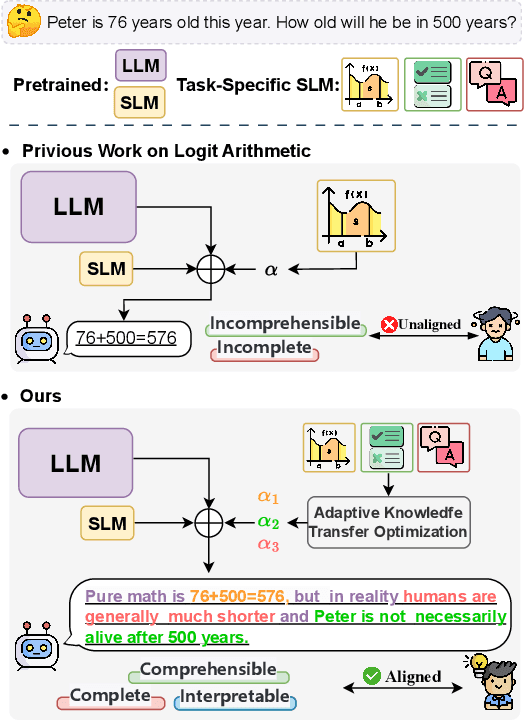
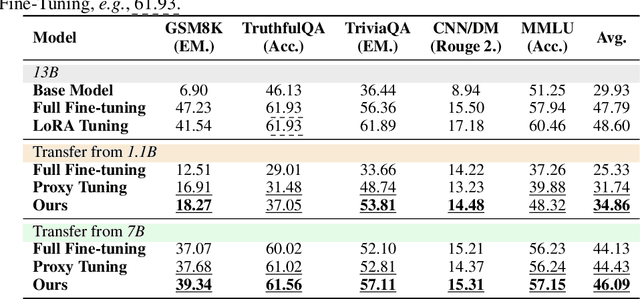
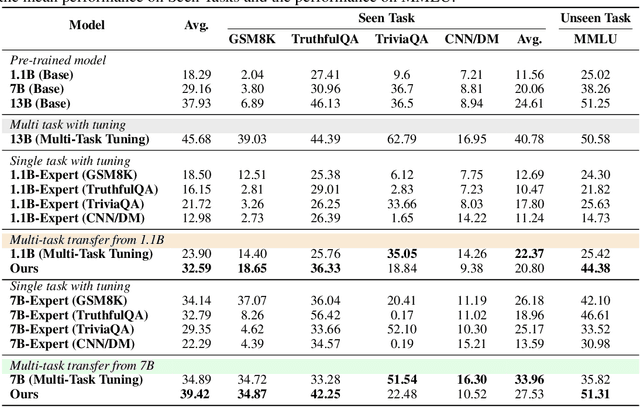
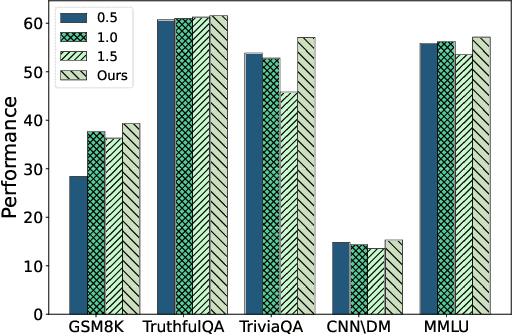
Abstract:Efficient fine-tuning of large language models for task-specific applications is imperative, yet the vast number of parameters in these models makes their training increasingly challenging. Despite numerous proposals for effective methods, a substantial memory overhead remains for gradient computations during updates. \thm{Can we fine-tune a series of task-specific small models and transfer their knowledge directly to a much larger model without additional training?} In this paper, we explore weak-to-strong specialization using logit arithmetic, facilitating a direct answer to this question. Existing weak-to-strong methods often employ a static knowledge transfer ratio and a single small model for transferring complex knowledge, which leads to suboptimal performance. % To address this, To surmount these limitations, we propose a dynamic logit fusion approach that works with a series of task-specific small models, each specialized in a different task. This method adaptively allocates weights among these models at each decoding step, learning the weights through Kullback-Leibler divergence constrained optimization problems. We conduct extensive experiments across various benchmarks in both single-task and multi-task settings, achieving leading results. By transferring expertise from the 7B model to the 13B model, our method closes the performance gap by 96.4\% in single-task scenarios and by 86.3\% in multi-task scenarios compared to full fine-tuning of the 13B model. Notably, we achieve surpassing performance on unseen tasks. Moreover, we further demonstrate that our method can effortlessly integrate in-context learning for single tasks and task arithmetic for multi-task scenarios. (Our implementation is available in https://github.com/Facico/Dynamic-Logit-Fusion.)
Mitigating Boundary Ambiguity and Inherent Bias for Text Classification in the Era of Large Language Models
Jun 11, 2024



Abstract:Text classification is a crucial task encountered frequently in practical scenarios, yet it is still under-explored in the era of large language models (LLMs). This study shows that LLMs are vulnerable to changes in the number and arrangement of options in text classification. Our extensive empirical analyses reveal that the key bottleneck arises from ambiguous decision boundaries and inherent biases towards specific tokens and positions. To mitigate these issues, we make the first attempt and propose a novel two-stage classification framework for LLMs. Our approach is grounded in the empirical observation that pairwise comparisons can effectively alleviate boundary ambiguity and inherent bias. Specifically, we begin with a self-reduction technique to efficiently narrow down numerous options, which contributes to reduced decision space and a faster comparison process. Subsequently, pairwise contrastive comparisons are employed in a chain-of-thought manner to draw out nuances and distinguish confusable options, thus refining the ambiguous decision boundary. Extensive experiments on four datasets (Banking77, HWU64, LIU54, and Clinic150) verify the effectiveness of our framework. Furthermore, benefitting from our framework, various LLMs can achieve consistent improvements. Our code and data are available in \url{https://github.com/Chuge0335/PC-CoT}.
 Add to Chrome
Add to Chrome Add to Firefox
Add to Firefox Add to Edge
Add to Edge